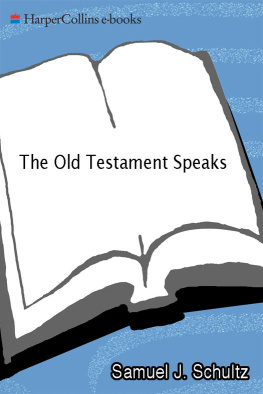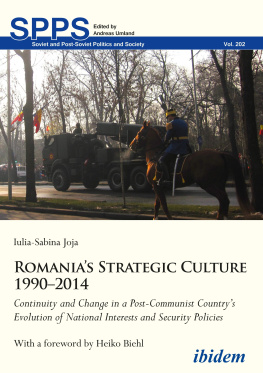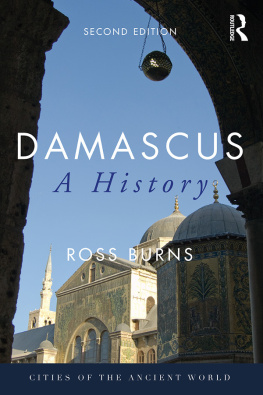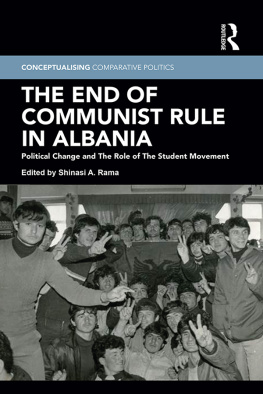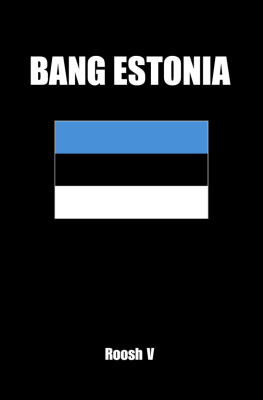Toivo U. Raun - Estonia and the Estonians, Updated
Here you can read online Toivo U. Raun - Estonia and the Estonians, Updated full text of the book (entire story) in english for free. Download pdf and epub, get meaning, cover and reviews about this ebook. publisher: Hoover Institution Press, genre: Romance novel. Description of the work, (preface) as well as reviews are available. Best literature library LitArk.com created for fans of good reading and offers a wide selection of genres:
Romance novel
Science fiction
Adventure
Detective
Science
History
Home and family
Prose
Art
Politics
Computer
Non-fiction
Religion
Business
Children
Humor
Choose a favorite category and find really read worthwhile books. Enjoy immersion in the world of imagination, feel the emotions of the characters or learn something new for yourself, make an fascinating discovery.

- Book:Estonia and the Estonians, Updated
- Author:
- Publisher:Hoover Institution Press
- Genre:
- Rating:4 / 5
- Favourites:Add to favourites
- Your mark:
- 80
- 1
- 2
- 3
- 4
- 5
Estonia and the Estonians, Updated: summary, description and annotation
We offer to read an annotation, description, summary or preface (depends on what the author of the book "Estonia and the Estonians, Updated" wrote himself). If you haven't found the necessary information about the book — write in the comments, we will try to find it.
Estonia and the Estonians, Updated — read online for free the complete book (whole text) full work
Below is the text of the book, divided by pages. System saving the place of the last page read, allows you to conveniently read the book "Estonia and the Estonians, Updated" online for free, without having to search again every time where you left off. Put a bookmark, and you can go to the page where you finished reading at any time.
Font size:
Interval:
Bookmark:
ESTONIA AND THE ESTONIANS
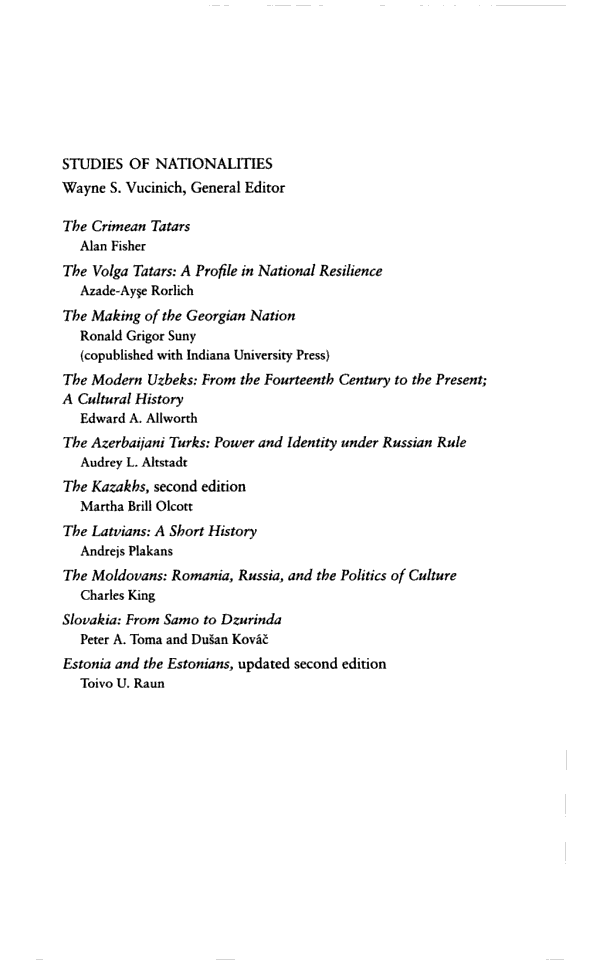
ESTONIA AND THE ESTONIANS
UPDATED SECOND EDITION
Toivo U. Raun
HOOVER INSTITUTION PRESS
Stanford University
Stanford, California
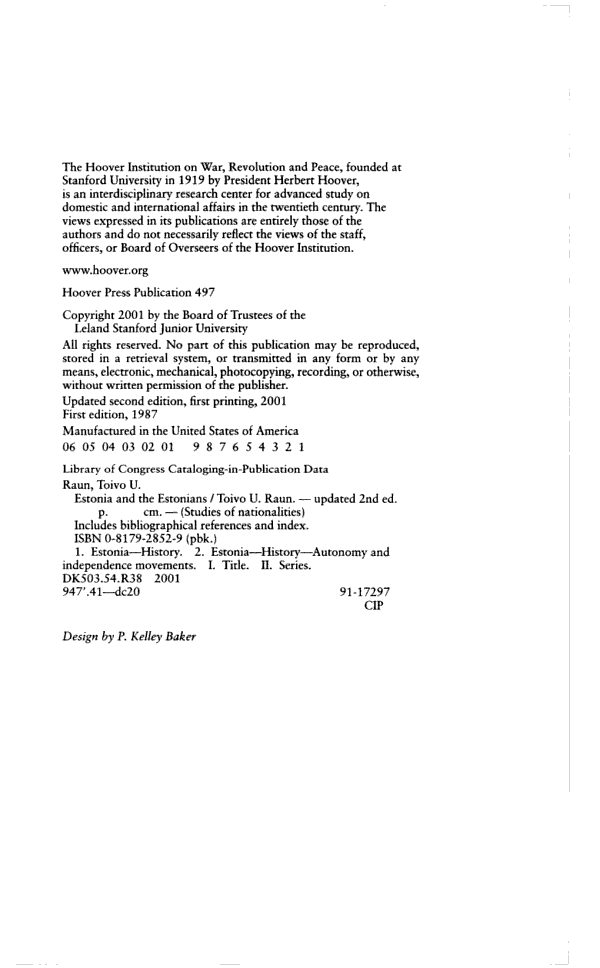
For my parents
List of Maps

Foreword
A highly welcome addition to the Hoover Institution's series on Studies of Nationalities is this updated second edition of Professor Toivo U. Raun's Estonia and the Estonians. The first and second editions of Professor Raun's book appeared in 1987 and 1991, respectively, and were praised by scholars and other readers alike. Since that time, the author has remained a close observer of developments in Estonia, and he provides us here with a masterful analysis of the new situation that unravels the complexities of the recent past of this country.
The timing of the restoration of Estonian independence in August-September 1991 caught nearly all observers by surprise. Although a renewal of Estonia's independent status seemed increasingly likely in the waning years of the Soviet Union, in the fluid and revolutionary situation that prevailed in the late 1980s and early 1990s it was not at all clear how the process would transpire. In the end it was the unforeseen failed coup by desperate hard-line forces who sought the chimera of a recentralized state that ironically began the breakup of the USSR. In this situation Estonia and the other two Baltic states greatly benefited from the bitter rivalry between Boris Yeltsin, as president of the Russian Federation, and Mikhail Gorbachev, as president of the Soviet Union.
Building on its past experience with democracy in the interwar era and its awareness of developments in the West through its close ties with Finland during Soviet rule, Estonia moved quickly to restore a parliamentary system of government, based on a new constitution that largely followed the liberal model of 1920. The reestablished unicameral parliamentary body was designated by the same name as in the interwar years, the Riigikogu (State Assembly), and as in the earlier period, the executive branch was clearly intended to be subordinate to the legislative one. In practice, the country's political system displayed numerous growing pains, but nevertheless democratic consolidation advanced substantially in the decade of the I 990s, especially in comparison to most postcommunist countries. Above all, both during the process of de-Sovietization up to August 1991 and in the ensuing decade, Estonians and non-Estonians alike proved capable of addressing a wide range of difficult political and social issues by nonviolent means.
Following the restoration of independence, Estonia faced a similar security dilemma to the one it confronted in the 1920s and 1930s. Relations with the successor to the Soviet Union, the Russian Federation, remained chilly, especially since much of Russia's recycled political and military leadership continued to view Estonia and the other two Baltic states as part of its rightful sphere of influence. However, tensions gradually subsided during the 1990s, and a major sticking point was removed with the withdrawal of former Soviet troops in l 994. On the other hand, Estonia rapidly rejoined the international community of states, gaining almost immediate membership in the United Nations and the Conference on Security and Cooperation in Europe, and the country made considerable progress toward closer integration with the West, although not yet including membership in the European Union and NATO. A welcome development was Estonia's growing participation in regional cooperation, including the Council of Baltic Sea States and intensive Nordic-Baltic ties, especially at the grass-roots level.
Perhaps because of its relative openness to the West through the window of Finland, Estonia adopted bold and innovative economic policies, including the introduction of its own currency in June 1992 and an aggressive free market approach that stressed liberalization and noninterference by the government. These steps also encouraged a diversification of the country's foreign trade, allowing it to escape economic dependence on Russia. Indeed, because of its macroeconomic success by the second half of the 1990s, Estonia gained the admiration of various Western economic organizations as a kind of model postcommunist state. Nevertheless, the harsh reality and pain of economic transition was unavoidable, and socioeconomic divisions increased, posing a new challenge for Estonia's political leaders.
As Professor Raun shows in several chapters, Soviet rule led to sweeping changes in Estonia's ethnic composition, perhaps the most difficult legacy of this era that the country faced. Although the ethnic Estonian share of the total population gradually inched upward in the 1990s, largely because of some emigration by East Slavs, a diverse and multiethnic society had become a permanent fact of life in Estonia. During the Soviet decades any frank discussion of ethnic relations was taboo since the official ideology proclaimed that "interna tionalism" had triumphed in the USSR. Under the circumstances Estonia's recent record of peaceful relations among its various nationalities is particularly noteworthy.
Throughout the book and in the new chapter on the 1990s, the author offers a balanced view of the Estonian past and pays important attention to cultural issues, which are often neglected by scholars. He stresses the key role of the interwar era in the modernization of the Estonian language and culture, including the firm establishment of a native-language educational system from kindergarten through advanced degrees at the university level. These developments allowed Estonian to withstand the Russification of the Soviet era relatively intact. Following the restoration of independence, as they sought to integrate with the rest of Europe and rejoin a globalizing world, the Estonians had to reassess their own cultural identity while also coming to terms with the minority cultures in their midst.
In a little more than a decade Estonia has undergone a remarkable transformation that might have seemed impossible even a short time ago. The country is no longer an isolated and suppressed corner of the Soviet empire but an active participant in the whole range of dynamic changes that are taking place in Europe today. Professor Raun is to be commended for his skillful coverage and assessment of Estonia's emergence from darkness into light.
Wayne S. Vucinich
Preface to the Updated Second Edition
I am very pleased that Hoover Institution Press is issuing an updated second edition of Estonia and the Estonians. It contains the following additions and changes: an entirely new chapter 15 on the decade of the 1990s, minor changes in chapter 14 on the late 1980s and the start of the 1990s, and corrections and updates in various parts of the text, appendixes, notes, bibliography, and the index. I am grateful to Rein Taagepera for valuable comments on the manuscript of the new chapter. Finally, I would like to express my sincere thanks to Pat Baker, Executive Editor, and the entire staff of the Hoover Institution Press for their friendly and efficient support with the various editions of this book.
Bloomington, Indiana Toivo U. Raun
April 2000
Preface
This volume is a survey history of Estonia from the first signs of human habitation to the present day. As the title implies, the emphasis is on the ethnic Estonians although other groupsfor example, the Baltic Germansare covered as well. The approach is chronological, but within each period or chapter the major political, economic, social, and cultural developments are treated. Because of space limitations, the cultural sections deal almost exclusively with the ethnic Estonians. Thus, for example, the important achievements of Baltic German culture in the nineteenth century are not included here. Moreover, the stress is on the modern period, beginning in the mid-nineteenth century. Although various aspects and periods of Estonian history have been studied in depth by both Soviet and non-Soviet scholars, no such detailed overview as presented here exists in any language. Furthermore, much of Estonian historiography has remained inaccessible to Western readers because of the language barrier, and it is one of the purposes of the present work to make the results of this body of literature available to a wider public. Evald Uustalu's useful survey, The History of Estonian People ( 1952), does not go beyond World War II, and a great deal of research has been done on earlier topics as well in the past three decades.
Font size:
Interval:
Bookmark:
Similar books «Estonia and the Estonians, Updated»
Look at similar books to Estonia and the Estonians, Updated. We have selected literature similar in name and meaning in the hope of providing readers with more options to find new, interesting, not yet read works.
Discussion, reviews of the book Estonia and the Estonians, Updated and just readers' own opinions. Leave your comments, write what you think about the work, its meaning or the main characters. Specify what exactly you liked and what you didn't like, and why you think so.

